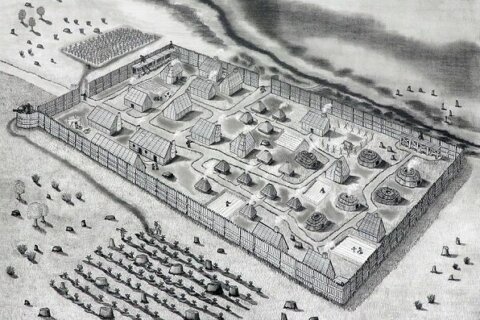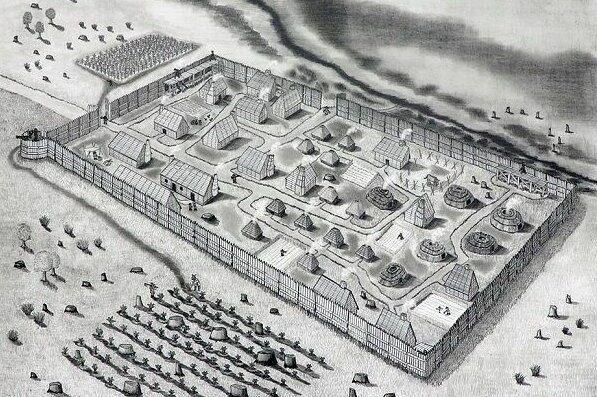
Leaders of Historic St. Mary’s City are sharing their elation over the recent discovery of a fabled fort built by the first European colonists to set foot in Maryland.
They also see the continued benefits of what can be gleaned from such historical artifacts.
“I was very excited,” says Regina Faden, the executive director of Historic St. Mary’s City. “I wanted to tell the world about it.”
St. Mary’s Fort, which was built in 1634, is roughly the size of a football field. It’s believed to be the fourth-oldest English colony in U.S. history.
Fieldwork to find the structure began in the early 1970s, but the first traces of the fort weren’t uncovered until 2018.
Travis Parno, director of research and collections for Historic St. Mary’s City, brought in geophysicist Timothy J. Horsley to check two different possible locations.
Following a period of narrowing down the precise location, Faden says Parno confirmed just last year that the fort was on the grounds.
But there was one unexpected problem: They couldn’t share the news with the public because of the pandemic and had to keep everything under wraps until now.
“We were planning to have an announcement last summer,” Faden said. “So a lot of plans that were in place didn’t happen, and so it’s going to happen this year.”
Based on historical accounts, dozens of colonists arrived in southern Maryland in March 1634 on two ships named the Ark and Dove.
The colonists set foot in an area that was home to the Yaocomaco, a Native American tribe that had loose connections with the Piscataway.
Scientists say it appears St. Mary’s Fort had Native American dwellings within it, indicating there was initial cooperation between indigenous populations and colonialists.
“So it began in a slightly different way in that it wasn’t a violent conflict immediately,” Faden said. “But once the encroachment started outside the fort and the English wanted to take the native land to grow cops, that’s where the conflict arises.”
Faden also points out the significance of Mathias de Sousa, who was an indentured servant and the first Black man to arrive in Maryland with the first settlers.
Years after his indenture concluded, de Sousa served in the Maryland General Assembly in 1642. He was the first man of African descent to take part in such an assembly in English America.
Based on what was uncovered at St. Mary’s Fort, coupled with the history of Native Americans within the settlement and de Sousa’s achievement, Faden said Americans can learn and find out how we arrived at where we are as a country.
“After the year we’ve had with all the discussion about who belongs and who’s an American, we can go back and look at the places where we really began and how we began, and we can answer some of those questions,” Faden said.
The public is allowed to venture through St. Mary’s City, see the fort and speak to excavators during normal hours, Faden said. General summer tour bookings will begin later this month and during April. Those tours will be conducted in July, and Faden said people can specifically request that their guide take them to see the St. Mary’s Fort site.
HSMC plans to make a formal virtual announcement about the fort’s discovery on Thursday.









